Flora Carmichael
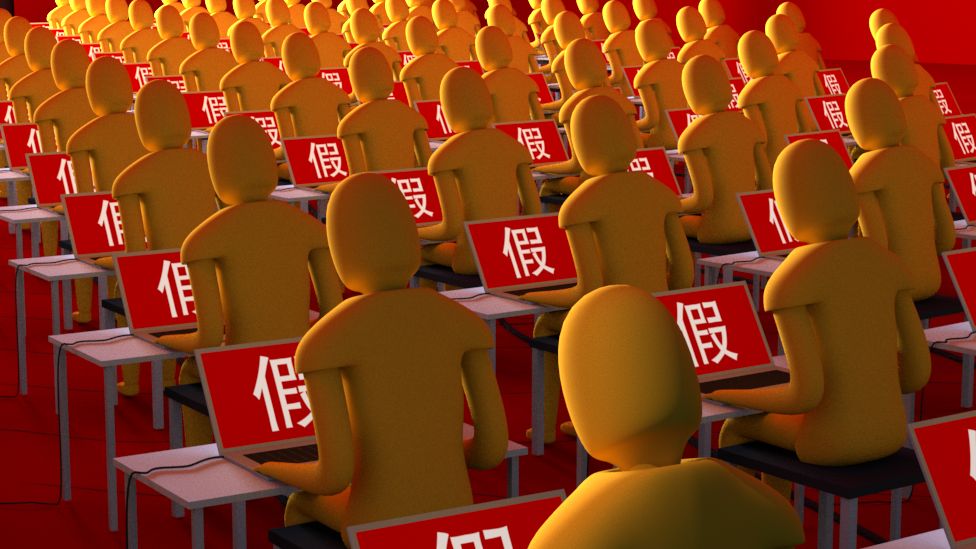
A sprawling network of more than 350 fake social media profiles is pushing pro-China narratives and attempting to discredit those seen as opponents of China's government, according to a new study.
The aim is to delegitimise the West and boost China's influence and image overseas, the report by the Centre for Information Resilience (CIR) suggests.
The study, shared with the BBC, found that the network of fake profiles circulated garish cartoons depicting, among others, exiled Chinese tycoon Guo Wengui, an outspoken critic of China.
Other controversial figures featured in the cartoons included "whistleblower" scientist Li-Meng Yan, and Steve Bannon, former political strategist for Donald Trump.
Each of these individuals has themselves been accused of spreading disinformation, including false information about Covid-19.
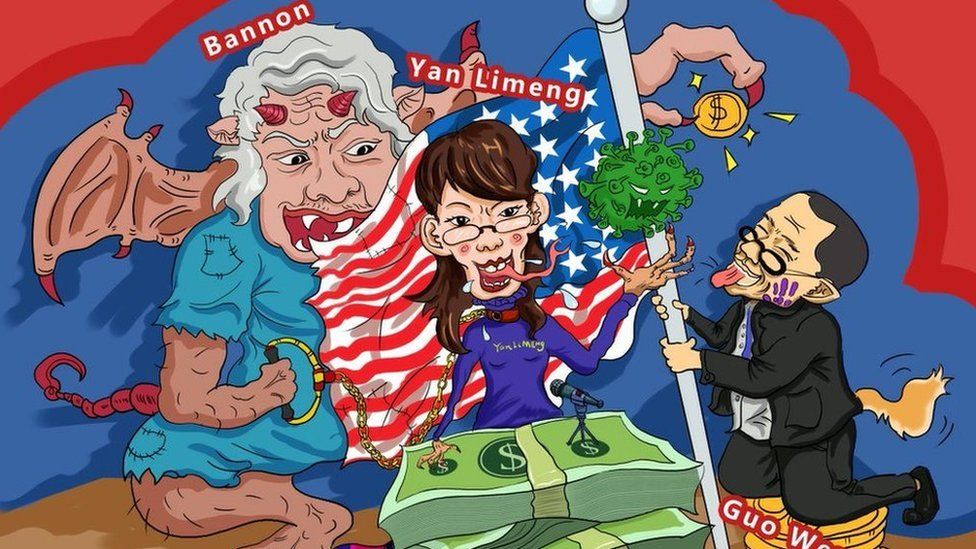 image captionThe cartoons shared seek to ridicule (left-right) Bannon, Li-Meng Yan and Guo Wengui
image captionThe cartoons shared seek to ridicule (left-right) Bannon, Li-Meng Yan and Guo WenguiSome of the accounts - spread across Twitter, Facebook, Instagram and YouTube - use fake AI-generated profile pictures, while others appear to have been hijacked after previously posting in other languages.
There is no concrete evidence that the network is linked to the Chinese government, but according to the CIR, a non-profit group which works to counter disinformation, it resembles pro-China networks previously taken down by Twitter and Facebook.
These networks amplified pro-China narratives similar to those promoted by Chinese state representatives and state media.
Much of the content shared by the network focuses on the US, and in particular on divisive issues like gun laws and race politics.
One of the narratives pushed by the network paints the US as having a poor human rights record. Posts from the fake accounts cite the murder of George Floyd among examples, as well as discrimination against Asians.
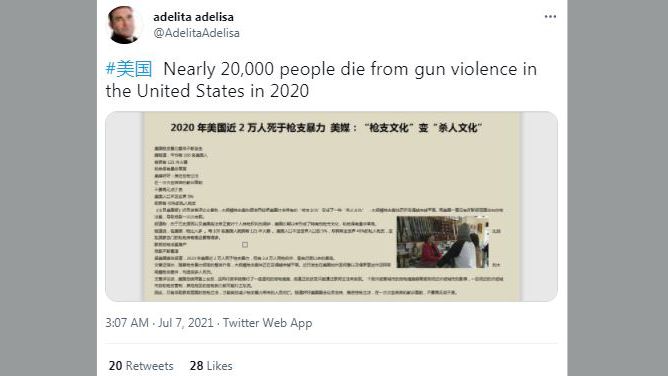 image captionThis account has since been suspended by Twitter for violating its rules
image captionThis account has since been suspended by Twitter for violating its rulesSome accounts repeatedly deny human rights abuses in the Xinjiang region, where experts say China has detained at least a million Muslims against their will, calling the allegations "lies fabricated by the United States and the West".
"The aim of the network appears to be to delegitimise the West by amplifying pro-Chinese narratives," said Benjamin Strick, the author of the CIR report.
There are strong similarities between this network and the so-called "Spamouflage Dragon" propaganda network identified by social analytics firm Graphika.
Commenting on the new study Ira Hubert, a senior investigative analyst at Graphika, said: "The report shows that on US platforms, there was no 'honeymoon' in the first months of the Biden administration.
"The network put out a steady mix of anti-US content, for example cheering US 'defeat' ahead of its withdrawal from Afghanistan and painting the US as a poor ally whose aid to India was inadequate during some of its worst months battling Covid."
How was the network uncovered?
The CIR mapped hashtags favoured by previously identified networks, unearthing more accounts that showed signs of being part of an influence operation.
Tell-tale signs included high levels of activity pushing propaganda narratives and repeated use of the same hashtags. Newly created accounts, accounts with usernames that appeared to be randomly generated, and accounts with very few followers also raised red flags.
Some profiles were created to post original content, while others only shared, liked and commented on those original posts, to help them reach a wider audience.
This kind of activity is often referred to as "astroturfing" because it is designed to create the appearance of a grass-roots campaign.
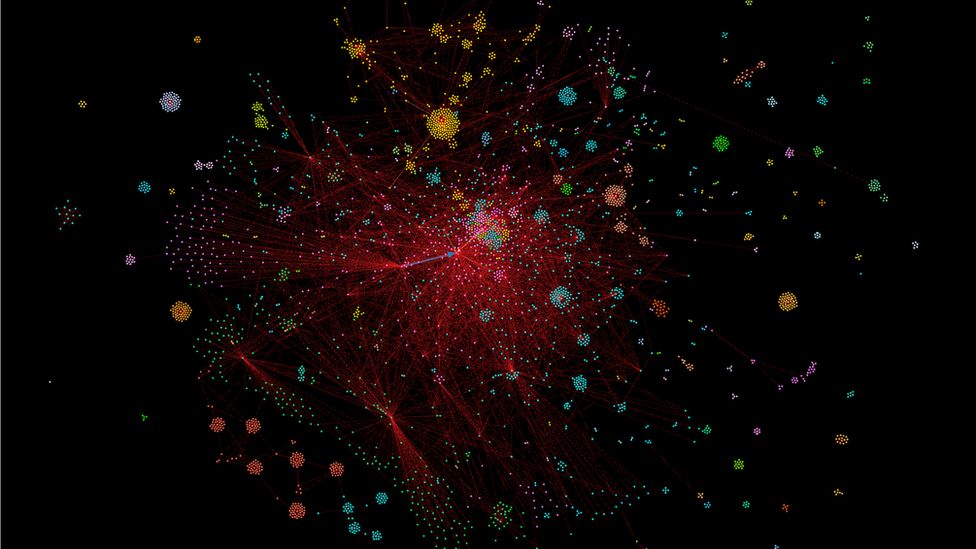 IMAGE SOURCEBENJAMIN STRICK / CIRimage captionThe study visualises how different accounts amplify each other - each small node represents a Twitter account
IMAGE SOURCEBENJAMIN STRICK / CIRimage captionThe study visualises how different accounts amplify each other - each small node represents a Twitter accountFake people
Many of the fake profiles used AI generated photos - a relatively new phenomenon that allows computers to create realistic looking images of people who don't exist. Unlike stolen profile images of real people, the AI generated images, which are created by a type of machine learning framework called StyleGAN, cannot be traced using a reverse image search.
The use of fake profile pictures in disinformation campaigns is becoming more common as users and platforms become more wary of suspicious accounts.
The CIR used various techniques to identify fake profile pictures in the network. The synthetic images always put the eyes in the same location, so lining them all up can help identify a collection of fake profile pictures.
Normally, a random collection of profile pictures would display much more variety in the cropping and the alignment of the eyes.
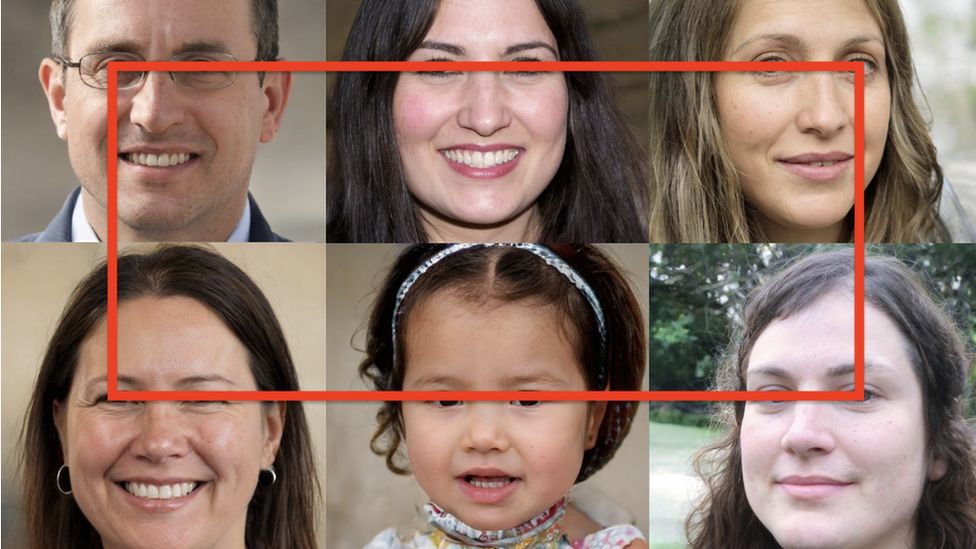 IMAGE SOURCEBENJAMIN STRICK / CIRimage captionThe network uses images of people who do not exist
IMAGE SOURCEBENJAMIN STRICK / CIRimage captionThe network uses images of people who do not existOther signs include blurred edges around the hair, teeth at strange angles, and blurred objects around the face.
Many of the Facebook accounts believed to be part of the network appeared to have Turkish names. These accounts may once have belonged to real people but were later hijacked or sold and given new profile pictures.
Hijacked accounts also spread the network's pro-China narratives on YouTube. Accounts that had previously posted in English or German and then lain dormant for years suddenly started posting Chinese language content from official Chinese state broadcasters.
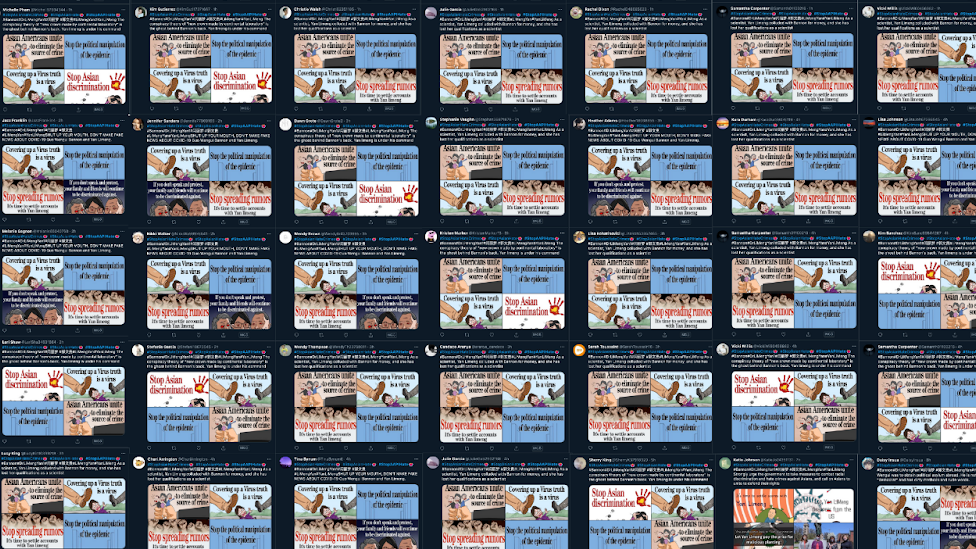 IMAGE SOURCEBENJAMIN STRICK / CIRimage captionThe report found spam Tweets using the same text, tags and images all uploaded on the same day
IMAGE SOURCEBENJAMIN STRICK / CIRimage captionThe report found spam Tweets using the same text, tags and images all uploaded on the same dayThe CIR shared its research with the social media platforms involved.
Facebook has removed the accounts on its platform highlighted in the study.
A Facebook spokesman said: "In September 2019, we removed a network of spam activity that posted lifestyle and political clickbait, primarily in Chinese. This network had almost no engagement on our platform, and we continue to work with researchers and our industry peers to detect and block their attempts to come back, like those accounts mentioned in this report."
YouTube also terminated accounts in the network for violating YouTube's community guidelines.
Twitter said it had also now removed almost all of the accounts identified by CIR, as well as a number of others engaged in similar behaviour. It said its investigations are still ongoing.
"When we identify information operation campaigns that we can reliably attribute to state-linked activity - either domestic or foreign-led - we disclose them to our public archive."
No comments:
Post a Comment